Buddha Images in the style of the Ayutthaya period

Buddha images of the Ayutthaya period show more different gestures than the other previoius styles. The images display the influence of Lopburi, U Thong and Sukhothai styles.
Initially the face may be more square, and a band (U Thong influence) may be present between the hairline and the forehead. Later on (Sukhothai influence) the face became more oval, with a Sukhothai type of flame on top of the ushnisha (prominent bump on the top of Buddha's head). Typical of some images are small lines carved above the upper lip and above the eyes.
Later on also, the facial expression became more stern, sometimes without any smile at all. In the later period, it became also common to show the Buddha wearing a lot of ornaments. One type shows the Buddha with an Emperor's attire (the Thai language term refers to 'big ornamentation') or with a somewhat more modest attire ('small ornamentation') featuring a crown or diadem. See examples especially at bottom of this page.
Buddha images of this period display many gestures and postures. Standing images (as featured below) often display the gesture of Dispelling Fear (Abhaya Mudra). Sitting images often display the gesture of Subduing Mara. Some giant Reclining Buddhas were constructed during this period.
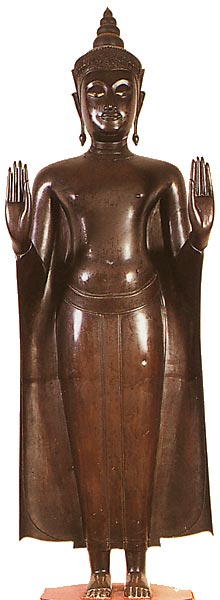
In the style of the Ayutthaya period.
Found at Wat Yai, Phetchaburi province.
Image present in the cloister of the Ubosoth at Wat Benchamabophit, Bangkok.
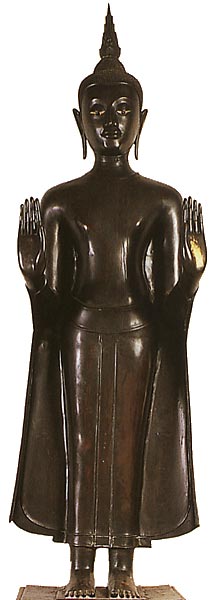
In the style of the Ayutthaya period.
Found in Phetchaburi province.
Image present in the cloister of the Ubosoth at Wat Benchamabophit, Bangkok.
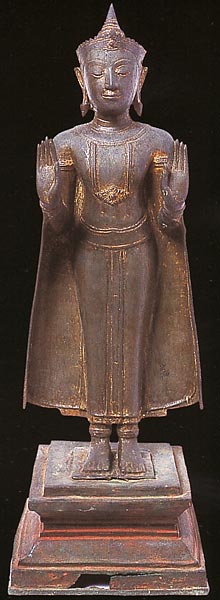
Ayutthaya Style. The Buddha is in Royal Attire. (16-17th Century A.D.)
National Museum Prachinburi.
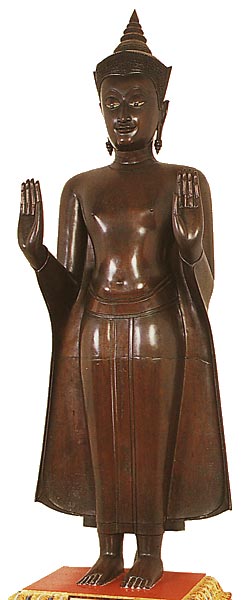
In the style of the Ayutthaya period.
Found in Phetchaburi province.
Image present in the cloister of the Ubosoth at Wat Benchamabophit, Bangkok.
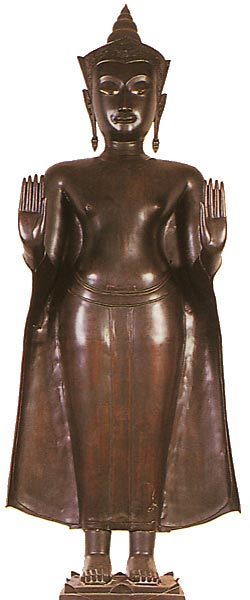
In the style of the Ayutthaya period.
Found in Phetchaburi province.
Image present in the cloister of the Ubosoth at Wat Benchamabophit, Bangkok.
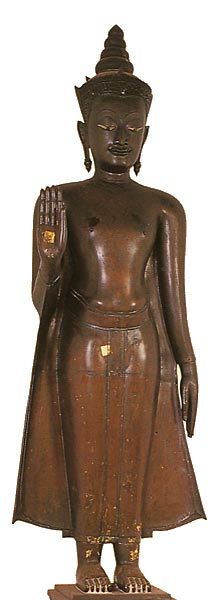
In the style of the Ayutthaya period.
Found at Wat Yai, Phetchaburi province.
Image present in the cloister of the Ubosoth at Wat Benchamabophit, Bangkok.
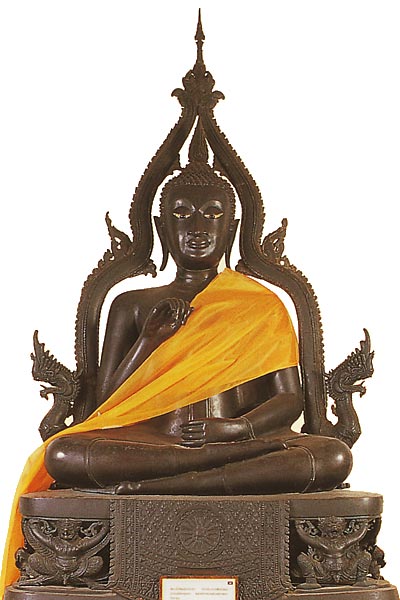
In the style of the Ayutthaya period.
Cast from an ancient model.
Image present in the cloister of the Ubosoth at Wat Benchamabophit, Bangkok.
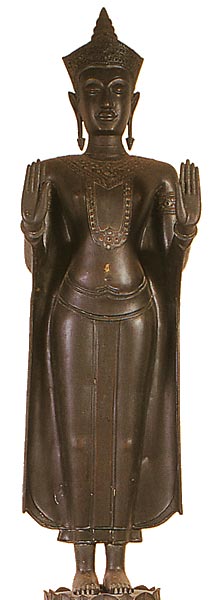
In the style of the Ayutthaya period.
Found in Phetchaburi province.
Image present in the cloister of the Ubosoth at Wat Benchamabophit, Bangkok.
![]() Characteristics and Postures of the Buddha
Characteristics and Postures of the Buddha
![]() Sitting Buddhas
Sitting Buddhas
![]() Reclining Buddhas
Reclining Buddhas
![]() Seven Days of the Buddha
Seven Days of the Buddha
Hand Gestures :
![]() The Six Main Mudras
The Six Main Mudras
![]() Dhyana Mudra
Dhyana Mudra
![]() Bhumisparsha Mudra
Bhumisparsha Mudra
![]() Abhaya Mudra
Abhaya Mudra
![]() Vitarka Mudra
Vitarka Mudra
![]() Varada Mudra
Varada Mudra
Historical Periods :
![]() Dvaravati
Dvaravati
![]() Khmer-Lopburi
Khmer-Lopburi
![]() Chiang Saen - Lanna
Chiang Saen - Lanna
![]() Sukhothai
Sukhothai
![]() U Thong
U Thong
![]() Ayutthaya
Ayutthaya
Historical Notes :
![]() Dvaravati
Dvaravati
![]() Sukhothai
Sukhothai
![]() Ayutthaya
Ayutthaya
![]() Resources
Resources
Temples in Thailand :
![]() Overview
Overview
![]() Wat Pho
Wat Pho
![]() Wat Benchamabophit
Wat Benchamabophit
Buddha Images at :
![]() Buddha Images at Wat Phra Pathom Chedi
Buddha Images at Wat Phra Pathom Chedi
![]() Introduction to Buddhism in Thailand
Introduction to Buddhism in Thailand
![]() The 10 Jatakas (lives of the Buddha) as depicted in Thai mural Temple paintings
The 10 Jatakas (lives of the Buddha) as depicted in Thai mural Temple paintings
More about Thailand at ThaiWebsites.com : Articles, and Web Directory
Content by Guido Vanhaleweyk, Bangkok.

.png)